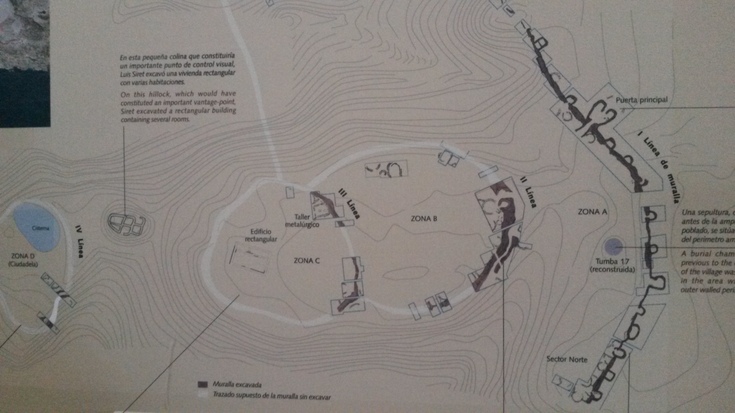Environmental Geology in Spain - Archaeology
26.02.2016
Newsfeed of the day
by Andrea Mazón and Maya Schmitt
The image shows the three zone structure of Los Millares, which is one of the most important archaeological sites in Europe of the Copper Age. It was first excavated by Luis Siret who never published a full account of his excavations. Adding to this mistery, Los Millares presents an intersection of geology, archaeology and history. One does not find volcanism here, instead we find river deposits and animal fossils, such as deer or rabbit, indicate that the area must have been covered in forest previously. Moreover, rocks in the area indicate that metals must have been a resource here. It is consequently unsurprising that the inhabitants of Los Millares felt the need to protect their livelihood by building three concentric lines of stone wall with various fort structures for guarding. These smaller forts also showed signs of domestic use.
Considering the historical timeline which places the climate optimum at about 4000 years ago, the abandonment of Los Millares about 3000 years ago seems likely to have been a result of altering climate and living conditions. This can, for instance, be measure by how high the trees were at different points in time (“Verschiebung der Baumgrenzen”).
Standing at the edge of Zone C (see image above), we find an empty river bed that was once filled with sweet water from the Andarax river. The decrease of water flow here leads us to question what drove the inhabitants of this highly developed occupation site away.


